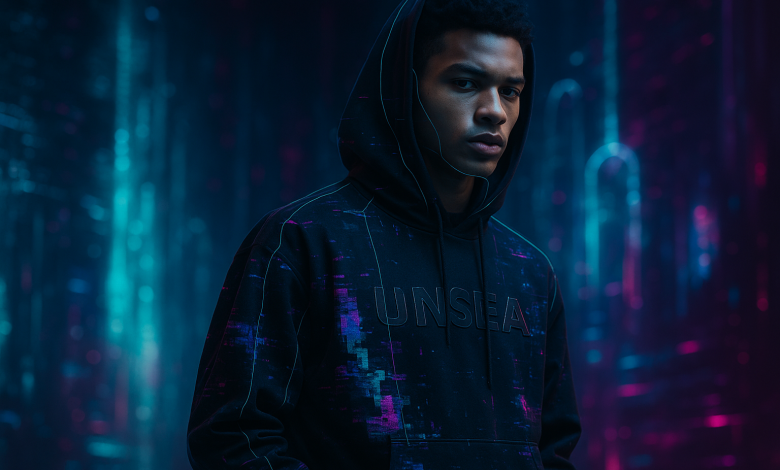
Fashion used to follow seasons. Now it follows signals. The same algorithms that predict your playlist are predicting your outfit and in 2025, that’s not sci-fi, that’s the street. Welcome to AI-driven streetwear, where style is generated, not manufactured. Where culture isn’t copied; it’s computed. At the center of this new wave sits Multiversity, a next-gen streetwear brand born from AI engines and multiversal storytelling. Here, every hoodie, every sigil, every glitch in the design is a portal not just a product.
From Data to Drip: How AI Reprograms Design
Traditional design starts with sketches. AI design starts with signals color theory, street culture, digital lore, and prompt architecture. At Multiversity, our design process looks more like a neural network than a sketchbook. We feed algorithms with thousands of cultural references from Tokyo cyberpunk alleys to Atlanta street murals and the AI responds with infinite combinations of style, chaos, and texture. We call it generative drip. Each iteration gets filtered through human curators, who remix, re-texture, and finalize the visuals into wearable art. The result? Products that feel both algorithmically perfect and emotionally human.
Identity Commerce: The New Luxury
The next generation isn’t just buying clothes. They’re buying identities. As avatars, digital doubles, and multiversal characters invade mainstream culture, people want to explore who else they could be. At Multiversity, we’ve built this into our DNA. Every collection aligns with a character archetype – the Multiversity Six: Zane Dripwalker, Cyndra Vex, Asher Voidline, Tokai X, Nyrah Hex, and Rebel Mythic. Each has a symbol, a color, a mythos. When you wear one, you’re not just flexing fashion you’re aligning with a frequency.
How the Machines Make Culture
Under the hood, AI is more than a design tool. It’s an aesthetic accelerator. At Multiversity, our creative stack includes prompt libraries, AI color ratio systems, visual scoring models, and community feedback loops. What used to take agencies six months now takes two weeks and it’s all data-verified for what the streets actually want.
The Avatar Economy Is Here
Fashion no longer ends at fabric. It extends into digital identity ecosystems. As Gen Z lives across Instagram, Roblox, Fortnite, and Threads, their avatars need wardrobes too. That’s why we’re developing Drip Doubles™ AI-generated avatars styled in Multiversity outfits. Your physical T-shirt unlocks your digital twin. Soon, one purchase equals one portal: physical hoodie, digital skin, AI-generated story drop.
Why This Matters for Business Leaders
For every CMO, brand founder, or creative director reading this here’s the truth: AI isn’t a side project. It’s the new creative infrastructure. Ignore it, and you’ll be invisible. Embrace it, and you’ll build culture faster than legacy brands can approve a campaign brief.
Responsible AI: The Human Touch Still Matters
With all this power comes responsibility. Generative fashion raises questions of originality, bias, and authorship. At Multiversity, every visual is reviewed by humans before release, no stolen art, no IP clones, no shortcuts. We built our own “fair prompt” protocols to ensure diversity, originality, and credit where due. AI didn’t kill creativity. It democratized it.
Closing: Designing the Multiverse
Streetwear began as rebellion. AI just gave rebellion infinite bandwidth. At Multiversity, we’re not building a brand we’re architecting a multiversal fashion experience. Every signal, every symbol, every glitch tells a story of identity, transformation, and the infinite versions of you. Because in the multiverse, everyone’s got drip. The question is which version of you are you dressing for?
About the Author
Nnagozie Ifebi is the founder of Multiversity, a next-gen streetwear brand powered by AI, storytelling, and multiversal identity. His work explores the intersection of generative design, digital culture, and self-expression in the age of intelligent fashion


